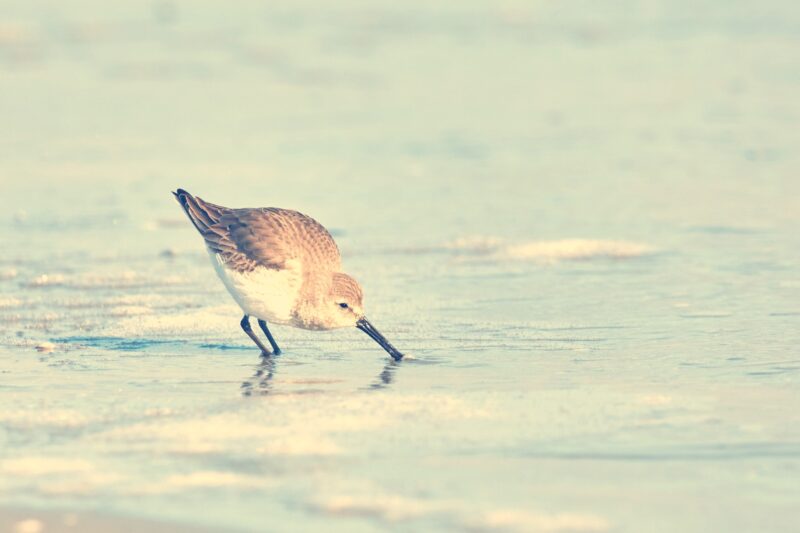“…for every atom belonging to me as good belongs to you,”
– Walt Whitman, Song of Myself
The seashore is a silent, desolate place in December. No children to colour it with the bright red and yellow of beach balls, buckets, and pails. No castles. No large and plush blue towels under creamy parasols and sweet, drip-dropping ice cream cones.
In June, it will be warmer. Children – and I – can survive the cold on that promise: returning summer. Another quiet shore in Delaware Bay waits too; in May, the sand and sea have been promised a skyful of birds.
Every year, tens of thousands of red knots – tiny migratory birds, each about the size of a deck of cards, and lighter – fly 15,000 kilometres south from the Arctic Circle to escape winter. In the spring, they fly another 15,000 kilometres back, the length of the entire globe, from the furthest tip of South America. The distance is colossal.
The birds, tiny, so tiny they fit in the palm of a hand. Through the thin, brown feathers, their heartbeats can be felt. In the spring, the feathers will have turned red; a rusty chestnut baked by the sun in Tierra del Fuego, two continents away.
To survive the journey, these long distance flyers must nearly double their weight; they depend on small clams, mussels, and, most crucially, eggs laid by horseshoe crabs in Delaware Bay.
These crabs are among the oldest animals on earth. For 475 million years, they have emerged at high tide, in early spring, to lay their eggs on that beach. They come in with the moon, then, a few weeks later, if one is lucky,
to be alive, to be there, to be looking to the sea… one sunset, thousands upon thousands of birds alighting.
Exhausted, hungry, digging for eggs. For the energy to fly the last 3,000 kilometres home, they must refuel and rest. Their lives depend on those eggs. As do those of many humans; the blood of horsehoe crabs is essential to pharmaceutical research and drug development. The biomedical industry uses it as a clotting agent to test for bacterial contamination; it has been used for vaccines, heart stents, artificial hips, intravenous medications…
On a shore in Delaware, the interconnectedness of all sentient beings; a bird, a crab, and children, all waiting for the end of winter.
But horsehoe crabs are disappearing; overfishing, climate change, rising CO2 levels turning the oceans acidic. Red knots are disappearing too, starved of food and shelter as they find fewer eggs and shores on their return.
These little birds travel a total of 30,000 kilometres, across the globe and back, every year. They see sky and lands beyond what most humans can even imagine: from the Magellan Strait, through Chile, Argentina, stopping briefly in Maranhão, Brazil, then on, along the East Coast of the United States, toward the Arctic, Canada’s Hudson Bay,
to be stopped, almost there, almost home, 3,000 kilometers away.
As of the year 2000, less than 25% of returning red knots reach Delaware Bay. They are now listed as threatened under the Endangered Species Act. Since 2004, pharmaceutical demand for horseshoe crabs has increased by 85%. And erosion, hurricanes, and humans have destroyed 70% of the beaches in Delaware.
Still, there are resilient crabs, tenacious birds, courageous humans. Courage comes from the old French word coeur: heart. Beating through feathers. The word appeared in the twelfth century. The crabs and birds are older, much older. And truly awesome efforts are being made to save them.
More is needed. More awareness, more courage and social change, across the oceans and all that divides us as humans, as beings. Because
“Every atom belonging to me as good belongs to you,
[…] my tongue, every atom of my blood, form’d from this soil, this air,”
because, on a shore in December, we all need that promise of summer.
